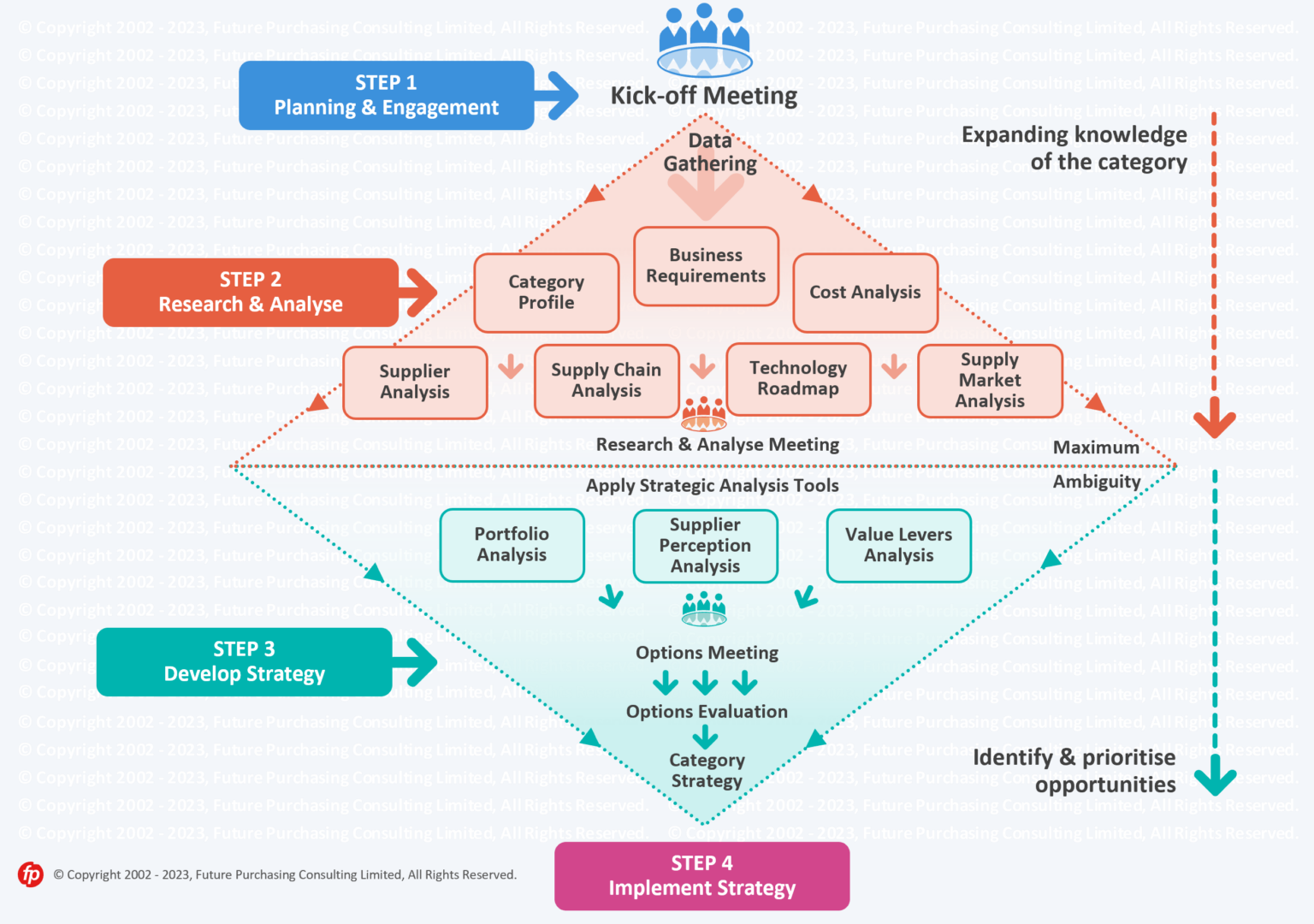
Blog
What should be in a category management strategy?
By Mark Hubbard |
A common challenge area for category teams is understanding the breadth of content that a category management strategy should contain.
All too often, it becomes self-limited to include only areas that procurement has under its immediate control, such as sourcing. However, an excellent category management strategy will address many aspects of the business which surround the most effective acquisition and use of a set of products or services.
Areas of value
At present, we work from a core list of 88 different areas of value that could be addressed, with a short series of broader organisational benefits accruing when undertaking category management. The core list includes familiar areas ( such as leverage price), others which might be considered (such as optimise supply chain), and some which rarely make it into category strategies even under extreme encouragement (like addressing the time to market for new products or services). The extended list also addresses areas such as an increase in organisational competence, reduced cycle time for category strategy development, broader stakeholder support, better alignment with organisational strategic goals.
Future Purchasing’s approach to category management strategy development.

The category strategy challenge
The challenge, as ever, is for the category strategy to receive the attention it needs as a primary way of delivering critical bits of organisational strategy ( as opposed to just providing access to a lower price). Two top 100 CEO’s (BP and Mars) have recently commented on the absolute need for sustainability initiatives to be embraced by their supply chains, critically, delivered by category strategies that make evident links from the business strategy to the necessary actions within the business the supply chain.
For example, we see category management strategies that include clear targets for changes relating to net-zero carbon, which drive specific actions and changes both in the specifications within the products and services being bought and within the supplier, selection approaches, supplier management approaches, contracting, internal processes, and more.
Expectations of the category management program
This broad ambition for all-embracing category strategies is crucial and needs to be taken on board by those responsible for delivering the overall category management program. Reviews, coaching and training all need to align to share the expectation for what is possible. In addition, the resource required to create organisationally based category strategies needs to be carefully curated and used to their full effect.
Without understanding what is possible and the vision for what could be achieved, many category programs default to addressing price and supplier selection. This is so limited; using a thorough process where something a lot simpler would suffice can waste time and effort.
Communicating breadth of opportunity
The issue now is, who will create and sustain the broader vision for category management in the organisation? If this is embraced and communicated at the right level, there is more likelihood of success. Being able to explain the breadth of opportunity in a compelling language is at the heart of all category management programs.
It is worth examining your programs to determine how well this is being done and then ensuring that you address any issues identified by that review.
Recommendation
The critical recommendation is not to refer to a category management strategy as a sourcing strategy, as that is the moment that the ambition needed is lost.

About Mark Hubbard
Director
30+ years experience in procurement and supplier management, in line and consulting roles
Previous employment: Positive Purchasing Ltd, SITA,
QP Group, BMW, SWWS, Rover
Education: BSc in Engineering Metallurgy, MBA University of Plymouth
CIPS: Member




